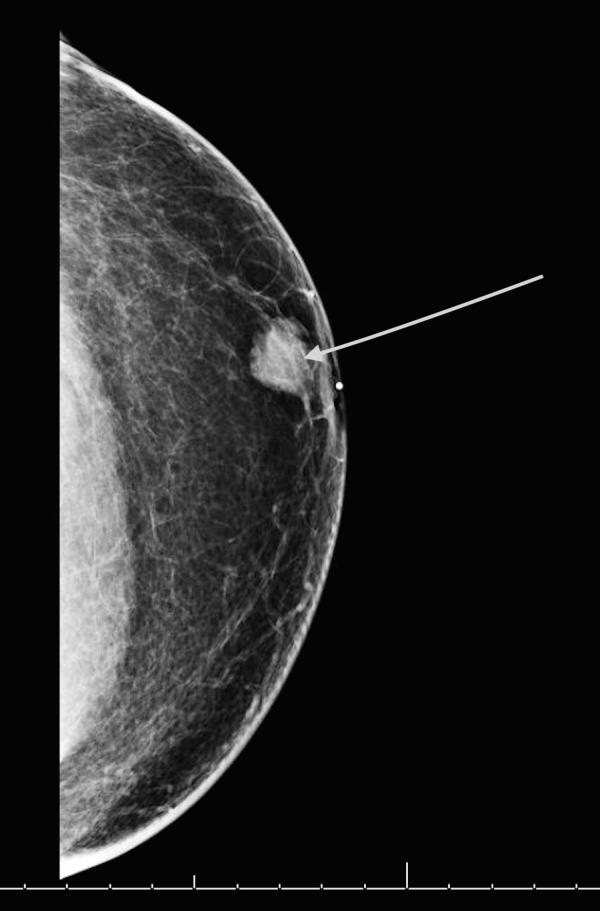, by NCI Staff
Men may be more likely than women to die after being diagnosed with breast cancer, particularly during the first 5 years after diagnosis, a new study suggests.
In the study, the 5-year overall survival rate after a diagnosis of breast cancer was 77.6% for men, compared with 86.4% for women, researchers reported in JAMA Oncology on September 19.
The findings add to previous research showing differences in death rates between men and women with breast cancer while also providing information about some of the factors that may contribute to the disparity between the sexes.
One factor identified by the authors was the lack of adequate treatment for many men with breast cancer, a phenomenon known as undertreatment. Another was the later diagnosis of the disease in men than in women.
Differences in clinical characteristics, such as the types and stage of breast tumors, age at diagnosis, and cancer treatment between men and women with breast cancer played a major role, accounting for 63% of mortality disparity, the researchers reported. However, after all those factors were accounted for, male patients still had 19% higher chance of dying than female patients within 5 years of diagnosis.
“We were not able to investigate other known or suspected contributors for the disparity in death rates in this study, such as compliance to cancer treatment, tumor genetics, and lifestyle factors, such as obesity, smoking, and alcohol use,” said Xiao-Ou Shu, M.D., Ph.D., of Vanderbilt-Ingram Cancer Center, who led the research.
“If we want to learn more about why outcomes of male breast cancer differ from those of female breast cancer, then we need more studies that focus on men with the disease,” Dr. Shu continued. These studies should include multiple outcomes, such as cancer remission, recurrence, and death rates from breast cancer and all causes, she added.
Focusing on Men with Breast Cancer
Fewer than 1% of breast cancers diagnosed each year occur in men, noted Alexandra Zimmer, M.D., of the Women’s Malignancies Branch in NCI’s Center for Cancer Research, who was not involved in the study.
“So far, we have been mostly lumping men with breast cancer and women with breast cancer in clinical trials and evaluations,” Dr. Zimmer said.
As a result, the treatment of male breast cancer has largely been based on studies involving women with the disease, she continued.
“The results of this retrospective study suggest that men with breast cancer deserve dedicated studies that will help us to better understand the biology of the disease in males,” Dr. Zimmer said.
Higher Death Rates, Later-Stage Cancers
To conduct the analysis, Dr. Shu and her colleagues used information from the National Cancer Database to compare death rates for 16,025 men and 1,800,708 women who were diagnosed with breast cancer between 2004 and 2014.
The National Cancer Database, which is sponsored by the American College of Surgeons and the American Cancer Society, includes more than 70% of newly diagnosed cancer cases in the United States.
In the study, men had higher death rates than women across all stages of breast cancer, even after the researchers adjusted for differences in patients’ clinical characteristics, such as the type and stage of disease, treatments received, age, race/ethnicity, and access to care.
In addition, the study found that a larger percentage of men than women were diagnosed with advanced-stage disease, which the researchers said could be attributed to a lack of awareness of and screening for breast cancer in men.
A higher percentage of men than women in the study had stage IV breast cancer at diagnosis (5.8% versus 3.8%), for example.
Despite having more aggressive disease overall, male patients were more likely than women to be undertreated, the researchers found. For instance, men were less likely than women to receive radiation therapy, including those who had breast-conserving surgery.
Clinical characteristics and undertreatment explained only about two-thirds of the difference in mortality. “Hopefully, future studies will be able to identify additional factors,” said Dr. Shu.
Unanswered Questions
As with all retrospective studies, Dr. Zimmer noted, the analysis had limitations. For example, the researchers lacked detailed information about treatment, such as which types of chemotherapy had been used.
What’s more, the National Cancer Database does not include information about the cause of death or the recurrence or progression of cancer.
“This study should be used mainly as a way to generate hypotheses for further studies, rather than to establish any firm conclusions at this point,” said Dr. Zimmer.
One of the messages of the study for men who are experiencing symptoms of breast cancer, she continued, “is to look for help and to consider treatment as soon as possible.”









